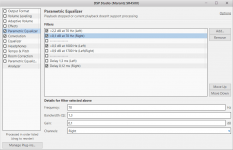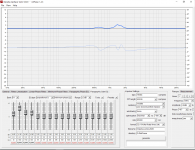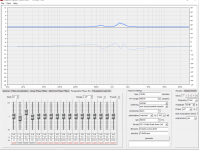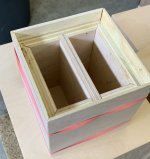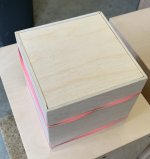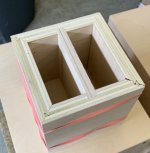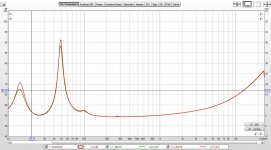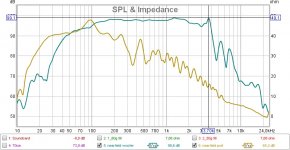If they were mine, after a long burn-in and knowing their sound perfectly, I would bypass the tweeter capacitor with a Miflex KPCU-01 0.02uF 600Vdc.
Tweeter resistors, Mills. Those of the woofer, others cheaper but in no case the cheap ones of cement.
The flatness of the audio system phase in the audible frequency band is perhaps more important than I already thought.
Miflex bypass is a yes or yes.

PS: speaker wires (out and in), with star quad geometry: Canare 4S11.
0.1uF 600v Miflex KPCU caps are ordered and on the way.
DSP achieves this pretty readily, are you using it?The flatness of the audio system phase in the audible frequency band is perhaps more important than I already thought.
Why?PS: speaker wires (out and in), with star quad geometry: Canare 4S11.
I use DSP but for the box or channel, without differentiating between tweeter and woofer. Listen in near field, without being exactly in the center. The right channel has a delay of 0.12 ms and is closer to a side wall (causing a bass boost).
That small delay is enough to improve the sound, I could not believe it!
One of the problems of close listening (in my cheap second system, the one they let me enjoy) is the lack of depth. I have managed to increase it but I would like a little more. Hence my interest in the predominance of the second H2 harmonic, but that is another story.
That small delay is enough to improve the sound, I could not believe it!
One of the problems of close listening (in my cheap second system, the one they let me enjoy) is the lack of depth. I have managed to increase it but I would like a little more. Hence my interest in the predominance of the second H2 harmonic, but that is another story.
Attachments
Last edited:
Audiocircle Star quad, the best geometry to build audio and power cables by maty
I was thinking that the bass gut punch from a TL that I normally would have expected was a bit lacking. I examined the internal structure closely and discovered a few leaks on the divider panels that were not perfectly sealed for air tightness and may have been contributing to a TL pinhole leak. This would compromise the bass extension and sensitivity of the bass. A quarter wave TL with a pinhole leak is sort of like playing low C on a flute with a leaky finger pad. My cabinet maker is new to building speakers so some audio-related points like air tightness were not fully understood by him. But he loves speaker building now and is willing to make it even better - he will remake me a new pair using lock mitered joints on the corners and dado joints on the internal panels. He wants it to be done right and look even better. He will also flush mount front baffle so no end grain is exposed. A much more complex, but sturdy and airtight build. This means that I won’t get the revised speakers back for some time. Maybe 2 weeks is my guess. But it will be a solid speaker. Here is a small example model that he brought to show me how the new joints will be some.
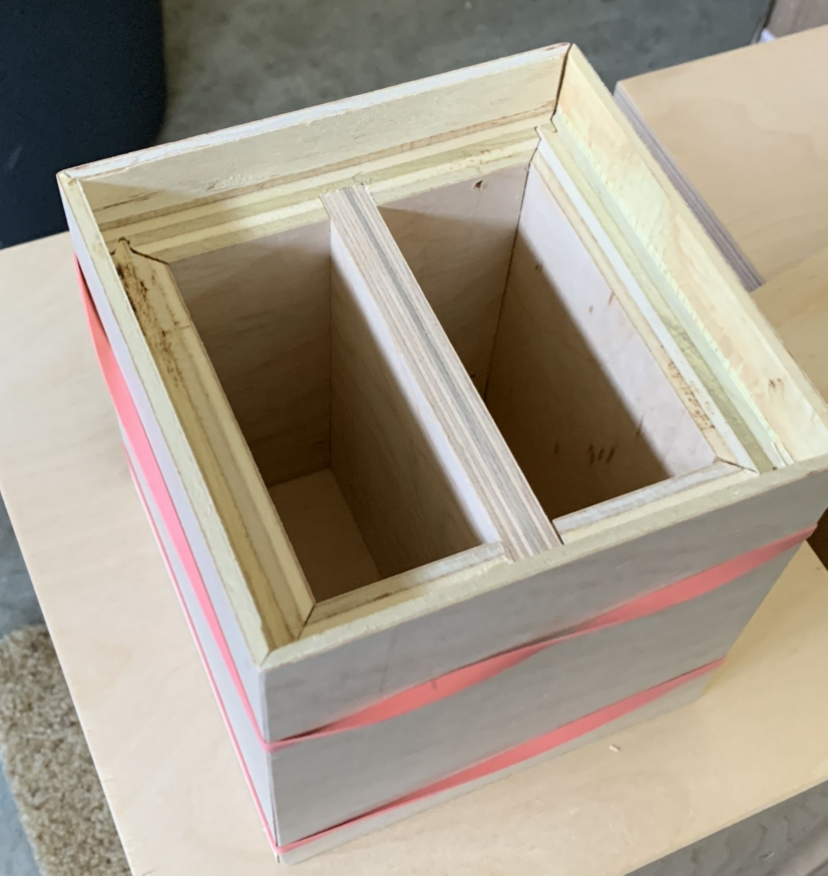
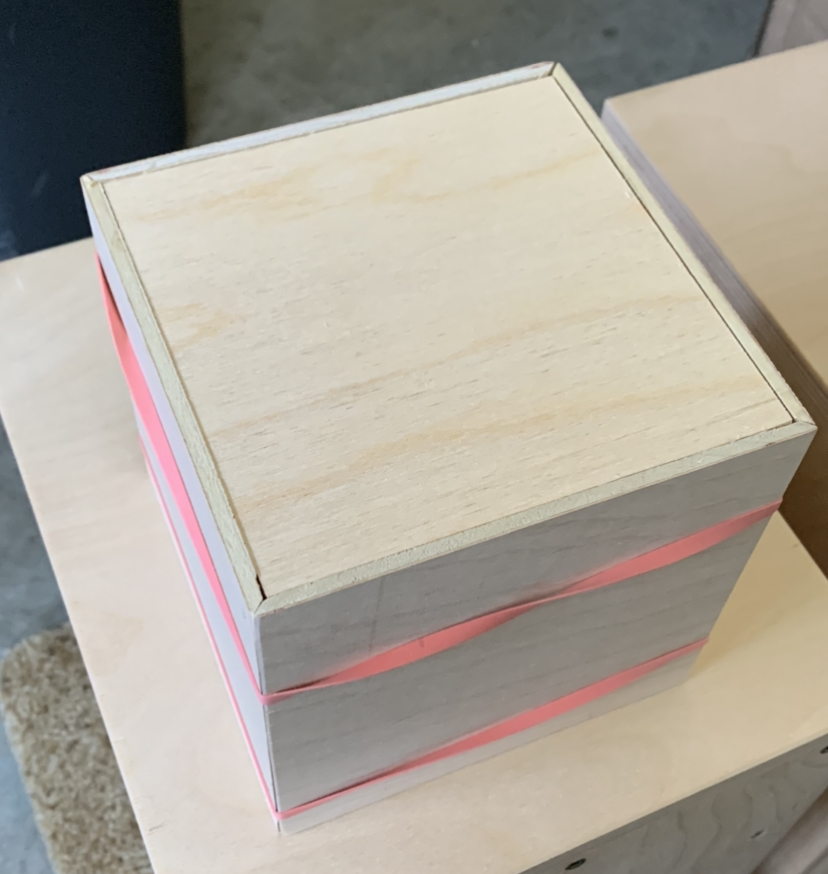
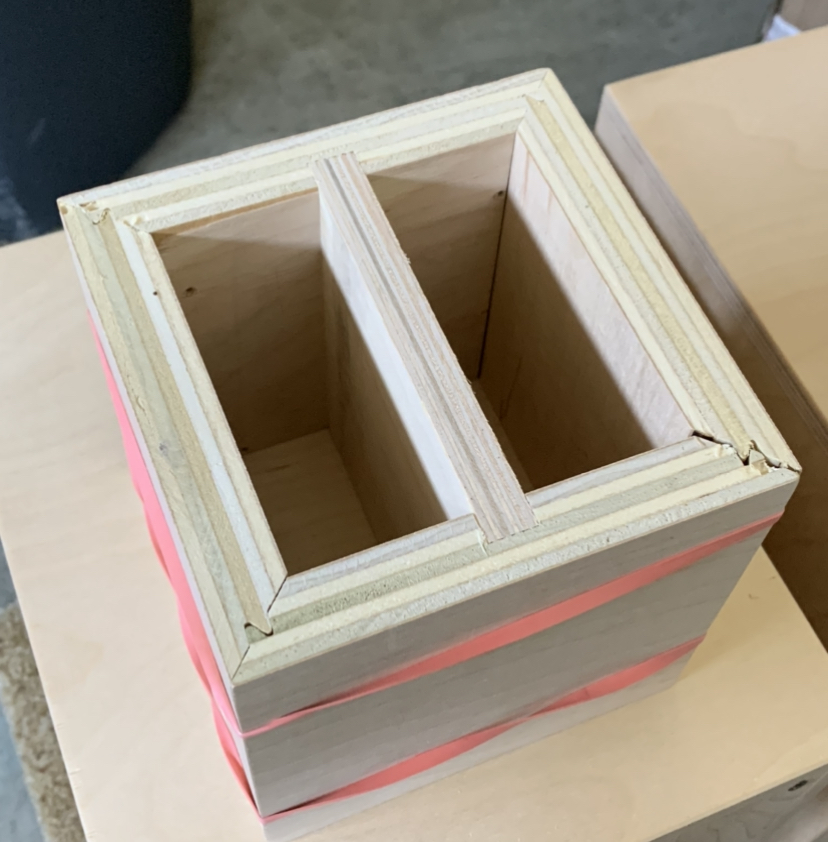
I hate the wait - but it’s going to be worth it I think.
I hate the wait - but it’s going to be worth it I think.
Attachments
Last edited:
None of this explains why the star-quad geometry makes any sort of audible difference for speaker cabling.Audiocircle Star quad, the best geometry to build audio and power cables by maty
Is he remaking everything from scratch or replacing some of the back-end pieces? It should be fairly easy to just "caulk" the offending areas with a hefty bead of PL Premium as a fix.I was thinking that the bass gut punch from a TL that I normally would have expected was a bit lacking. I examined the internal structure closely and discovered a few leaks on the divider panels that were not perfectly sealed for air tightness and may have been contributing to a TL pinhole leak.
There is no way to access the internal joints of the labyrinth passages. He will try to repair/rework the current one later but offered to make a new one from scratch to do it right. I explained that a dado joint is not necessary for airtightness - just more glue or the right type of glue like PL Premium. So we can skip the dado joints to save time but still going with mitered lock joints on external corners.
None of this explains why the star-quad geometry makes any sort of audible difference for speaker cabling.
I actually think cables make a difference - purely from a standpoint of minimizing impedance. If you have an amp with high damping factor, you don't want to use puny 24ga Cat5 to connect your speakers to it. I have found a difference in the bass authority (audible) and measured damping factor from using 16ga copper "speaker wire" (the clear jacketed stuff with real copper stranded core), to 12 ga solid Romex (not practical), and I currently use 12ga ultra flexible stranded premade cables with banana plugs on them $22. These work well and priced very well.
Internal wiring on speakers or amps for power, I now use 252 strands tinned copper ultra flexible silicone jacketed wire. I use it for transistor flying leads or connects between PSU and amp, or amp and speaker connector. There is a noticeable change in impedance that is measurable.
For a 6ft run of speaker cable operating at circa 0.01ohm impedance at the amp and 8ohms at the speaker, not sure it makes a difference.
Last edited:
I examined the internal structure closely and discovered a few leaks on the divider panels that were not perfectly sealed for air tightness and may have been contributing to a TL pinhole leak. This would compromise the bass extension and sensitivity of the bass.
That has possibly saved me from a 'hold my beer' moment. I was trying to work out if I could convert a cabinet I have to TL by inserting the labyrinth from the rear. Additional risk assessment required!
I'm about 95% on board with a floorstanding TL for this purifi woofer for my next cabinet project, maybe with an older soft dome tweeter of which I have many here. I keep chasing more bass clarity with this woofer. Its gone from really good in the reflex cab to very good in the passive radiator cab to ?? in the TL cab. I don't have the skill to do the TL design so hopefully someone finalizes a design which I will build. I couldn't figure out that TL software.
If the line is approx 89” as I calculated it then this would give a quarter wave tuning of 30hz (MH-Audio calculator) which matches my Leonard and XRK’s models reasonably well.
Whilst I am on, @mainframe99, I saw you did a minidsp crossover for the purify 6.5 (is this the 4 ohm version) with a 26adc using the Harsch scheme that looked very good, any chance you would be willing to share the settings via PM if I send you a message (personal use only).
(Sorry emails crossed in the ether).
Flick me a PM - sorry I am very busy at work at the moment but when things calm down ill be back at it
You'd loose 1/2" of cabinet interior width in exchange for building the labyrinth with 1/4" sides. All sealed up nice and slip the assembly into the shell you've got.That has possibly saved me from a 'hold my beer' moment. I was trying to work out if I could convert a cabinet I have to TL by inserting the labyrinth from the rear. Additional risk assessment required!
I did some impedance measurments of the Purifi in TL-box.
Comments are welcome

Very low tuning frequency around 26Hz
The "cats ears" are quite different in height. Not sure if I should fill more to make them more even? The 2 curves are with 50 (2oz) and 80g (3oz) fill (wool).
Should I try to get rid of the knee at 100Hz?
There is a small resonance at 270Hz (1,25m). Can it be a standing wave from top-bottom-top of the first section? My internal measure is 82cm but with influence of the damping?
Comments are welcome

Very low tuning frequency around 26Hz
The "cats ears" are quite different in height. Not sure if I should fill more to make them more even? The 2 curves are with 50 (2oz) and 80g (3oz) fill (wool).
Should I try to get rid of the knee at 100Hz?
There is a small resonance at 270Hz (1,25m). Can it be a standing wave from top-bottom-top of the first section? My internal measure is 82cm but with influence of the damping?
Attachments
Since I'm on it - here's the nearfield measurments also

There is a peak at 3700Hz. I can hear it when playing music! I'm currently using 1,5kHz 12dB LR and that sounds good. The Bliesma T34A is able to do that crossover point as well.
It's about 9cm from baffle to first internal section. It might not be enough?
Considering the low tuning (26Hz), what do you think about cutting the first internal section half way - giving a shorter TL-length, but would allow the Purifi to breathe better?

There is a peak at 3700Hz. I can hear it when playing music! I'm currently using 1,5kHz 12dB LR and that sounds good. The Bliesma T34A is able to do that crossover point as well.
It's about 9cm from baffle to first internal section. It might not be enough?
Considering the low tuning (26Hz), what do you think about cutting the first internal section half way - giving a shorter TL-length, but would allow the Purifi to breathe better?
Attachments
- Home
- Loudspeakers
- Multi-Way
- Simple Passive Harsch XO Using PTT6.5 and RS28F in a Waveguide
